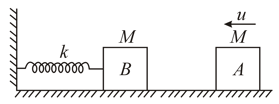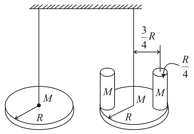Embibe Experts Solutions for Chapter: Simple Harmonic Motion, Exercise 3: Exercise-3
Embibe Experts Physics Solutions for Exercise - Embibe Experts Solutions for Chapter: Simple Harmonic Motion, Exercise 3: Exercise-3
Attempt the practice questions on Chapter 19: Simple Harmonic Motion, Exercise 3: Exercise-3 with hints and solutions to strengthen your understanding. Beta Question Bank for Engineering: Physics solutions are prepared by Experienced Embibe Experts.
Questions from Embibe Experts Solutions for Chapter: Simple Harmonic Motion, Exercise 3: Exercise-3 with Hints & Solutions
The particle executing in a straight line has velocities , . at three points distance one metre fro each other. If maximum velocity of the particle is . Find
The displacement of a particle varies with time as . If its motion is , if maximum acceleration . Find a
In the figure shown, the block collides with the block and after collision they stick together. Calculate the amplitude of resultant vibration in . Given

A block of mass hangs without vibrating at the end of a spring with a force constant attached to the ceiling of an elevator. The elevator is rising with an upward acceleration of . The acceleration of the elevator suddenly ceases. If amplitude of the resulting oscillations is . Find .
The two torsion pendula differ only by the addition of cylindrical masses as shown in the figure. The radius of each additional mass is the radius of the disc. Each cylinder and disc have equal mass. The ratio of time periods of the two torsion pendula is . Then is.

Two particles and execute SHM along the same line with the same amplitude and same frequency about same equilibrium position . If the phase difference between them is , if maximum distance between the two is . Find
A body executing has its velocity and when its displacement from the mean position are and respectively. Calculate the length of the path.
A particle is oscillating in a straight line about a centre of force , towards which when at a distance the force is where is the mass, a constant. The amplitude is . When at a distance from the particle receives a blow in the direction of motion which generates a velocity na. If the velocity is away from , if new amplitude is . Find .
